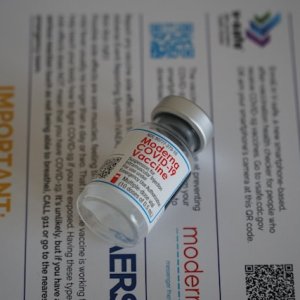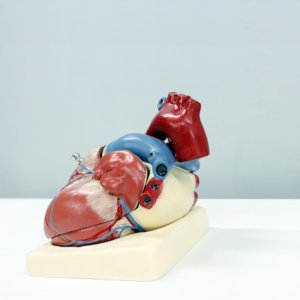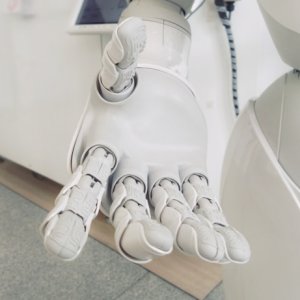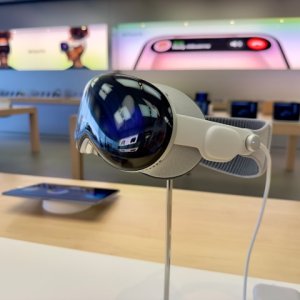Regenerative Medicine for Patients Beyond Treatment

Regenerative Medicine for Patients Beyond Treatment

Regenerative Medicine for Patients Beyond Treatment

STORY INLINE POST
Q: How has GIINT advanced neuroregeneration in neurodegenerative diseases through the use of dental pulp stem cells and the neurotrophic factors secreted by them?
JL: For a long time, it was thought that injected cells would become neurons. This has been proven wrong. That said, for these diseases, the neurosurgeons may inject the cells intrathecally. From there, cells go to the subventricular zone (SVZ) where the progenitor neural cells are. Those cells will eventually become a type of neuron. It is really important to differentiate what these cells can be. In 2014, we published a peer-reviewed article in Neuro Science about neurotrophins and dental pulp. We know now that there is not a significant differentiation for progenitor neural cells, so the mesenchymal stem cells (MSCs) that neurosurgeons inject intrathecally will go to the SVZ to stimulate them.
For instance, multiple sclerosis (MS) is a disease that affects myelin in human nerves. Patients with MS start losing myelin. Dental pulp cells produce neurotropic factors that help progenitor neural cells to produce oligodendrocytes that are responsible for myelin. Thus, a patient that has just been diagnosed with MS can start regenerating myelin, rather than regenerating the dead cells. By regenerating myelin, the alterations caused by MS are diminished.
A similar phenomenon can be seen with Parkinson’s patients. In this case, motor neurons are affected. We know the specific protein that starts degenerating the neurons. The purpose of MSC intrathecal transplants is to provide immunomodulation and anti-inflammatory effects trough paracrine neurotropic factors secretion. The trigger protein that causes Parkinson’s could be stopped because many of the factors that lead to its creation are related to inflammation.
In spinal cord damage, the result is a lack of movement depending on the level and location of the injury. Scientific evidence provided by doctors in Spain shows that rather than regenerating damaged cells in the spinal cord, MSCs injected into the affected area will have immunomodulation and anti-inflammatory effects that create a bridge. We have three patients in Mexico who have already recovered partial motor functions thanks to MSCs.
AF: As a company, we are now focused on longevity, including regeneration of several types of cells. By using MSCs for regeneration and to induce immunotherapy and anti-inflammatory effects, we are embarking on a process of regenerating tissues. There is no such thing as anti-aging since aging is not a disease, it is a matter of frailty: the ability of our body to remain strong. We cannot prevent aging but we can prevent the body from being friable as it ages. This is what makes MSCs so interesting. This is what makes the difference in regenerative medicine.
Q: Besides neuroregeneration, what are some other relevant projects GIINT has embarked on?
JL: We are trying to do a Phase 1 and 2 of a CRO with IMSS to launch a clinical trial with COVID-19 patients who are beyond treatment in the ICU. These patients share considerable affectations to vital organs. Through our double-blind study, we will provide patients with active cells and nonactive cells. We are hopeful that 99 percent of the patients will recover considerably. In this study, we have a broad set of indicators that allow us to track whether the cells are working against the main affliction while inducing anti-inflammation.
COVID-19 causes a cytokine storm secreted by the body’s immunological system. As the body tries to defend itself, it deploys a great number of anti-inflammatory elements. COVID-19 patients are not killed by the virus itself, they are killed by their immunological response. If the patient does not have a severe response, immunologically speaking, they can recover faster, which is not the case for diabetes or other diseases. Due to their anti-inflammatory properties, MSCs prevent greater inflammation caused by the immunological response. Once MSCs are in the vein, they travel through the arteries and pulmonary alveolus where they encounter and fight the immunological cells. Once dead, MSCs have an anti-inflammatory effect.
The downside comes when in Mexico there are no compassionate treatment like other countries. Compassionate treatment is when the patient is beyond treatment and the possibility to try new methods becomes a reality. In Mexico, this scheme has been difficult to introduce in COVID-19 patients even though there are MSC-producing companies that have had success in treating more than 200 patients.
Q: What happened to the proposed merger between BioStem and GIINT?
AF: The merger was not completed. We signed the contracts and the process was really advanced. However, when we performed the due-diligence process we decided to break off the deal. As a public company, BioStem needed a rapid turnover. Although the merger could have accelerated some of our processes, it would also have taken away some of our credibility. One of the most important factors for GIINT is to remain doing things the right way. We have partnerships with many scientists across the world because they trust us. A merger with BioStem could have damaged that reputation.
Q: What is GIINT’s strategy to continue to grow in the market?
AF: Our goal is to be self-sufficient. We have serious partners that understand our business and have helped the company to grow further and to export our MSCs to other regions. As soon as COVID-19 is under control, clinics that have used cells understand the importance and the benefits of them and their regenerative process. Clinica Franklin is among the few that has a regenerative medicine license and handles a constant flow of medical tourism, which makes it one of our main clients.
Q: What are GIINT’s priorities for 2021?
FV: For the near future, we will focus on COVID-19 because many patients who overcome the disease still suffering from sequelae. As a systemic disease, there continues to be an impact on organs. There are patients with cerebral strokes, renal failure and other afflictions who will need therapy sooner or later. We believe there will be a greater need for regenerative medicine in the near future. Our biggest challenge is border closings because most of the clinics we work with are in the north of the country. The number of patients has diminished but once the border is opened, they will surely require cell therapies and, later on, physical therapy.
Grupo Impulso de Incentivación para Nuevas Tecnologías (GIINT) is a biotechnology company focused on adding value to available stem cell treatments and subproducts for regenerative medicine.








 By Miriam Bello | Senior Journalist and Industry Analyst -
Fri, 01/29/2021 - 12:43
By Miriam Bello | Senior Journalist and Industry Analyst -
Fri, 01/29/2021 - 12:43
















